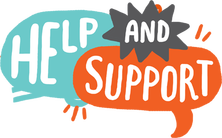Step 1: Defining "Value"
The very first step on your path to a Continuous Improvement culture is defining Value. What does Value mean to you, to your process, to your clients, and to your staff? Very quickly it becomes obvious that Value means a lot of different things to a lot of different people. As is always the case with any Continuous Improvement model, we begin by determining who is the client.
Who is the Client?
|
The client can sometimes be very elusive. When talking about a Vivarium, the client can be your internal staff, research personnel, or even the animals under your care. Value is always determined by the process you're evaluating. Let's take an example of the Cage Wash, in this situation the Cage Wash staff are the clients in the situation whereby the Animal Care staff deliver soiled cages to the Cage Wash. When looking at the preparing and sterilization of equipment, the Animal Care staff become the clients in that process, as the Cage Wash staff supply materials to the Animal Care staff. One can look at these two groups who share responsibility over this area, and are therefore both are Internal Clients of the process. They have a symbiotic relationship with one another and can't operate without each other.
Research personnel act as External Clients in most cases as they aren't directly involved in internal processes. They may make requests for more housing space, access to the biological safety cabinets, colony management, and more. These duties fall on your program to provide, but the Research personnel don't necessarily need to know, or care about all the ins and outs of how you make these requests happen. They simply want what they've asked for. In the case of animals requiring treatments, the Animal Care/Veterinary Care staff are the ones who administer the treatments to the animals, meaning the animals themselves are the clients. They would like to be treated as quickly as possible, and don't really have interest in any other aspects of the process that takes place prior to them getting the treatment. Can you think of other situations where you would have both Internal and External Clients? In the next step we will look at how we determine Value-Added Activities to all clients, regardless of if they're Internal or External. |
What Are Value-Added Activities?
|
As discussed above, it's clear that Value is important to all Clients, but what makes a Value-Added Activity?
In short, Value-Adding Activities are any activities that add Value to the customer. That sounds simple enough, right? In reality, there are three basic criteria all Value-Added Activities must adhere to: 1) The step in the process transforms the item toward completion. 2) The step in the process is done right the first time, every time (no defects or rework). 3) Any steps in the process that the customer cares (or would pay) for. Let's think of an example to better explain this concept. If we go back to the Cage Wash example from above, do the Animal Care Technicians care if the cages are sterilized? Don't they just want the cages when they need them? |
What Are Essential Non-Value Activities?
Coming Soon...
What is 'Non-Value' or Waste?
Coming Soon...
How Can We Help?
|
"How do you eat an elephant?
...one bite at a time." Tools and concepts can be intimidating, and videos can only show so much. We want to help you get started on the right foot, and be as successful as possible! Contact us and we will do our absolute best to assist in any way possible, and put you in direct contact with an experienced Continuous Improvement practitioner. Sends us an email at: [email protected] |




